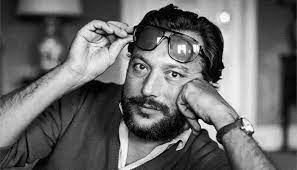
Soprani, Luciano
Luciano Soprani (1946-1999) was an Italian designer, considered the inventor of the androgynous look. Born in Reggiolo, as last of six brothers, at 18 he graduated as agricultural expert at the Zanelli Institute in Reggio Emilia.
His beginning at MaxMara
“But,” he used to say, “I always continued drawing dresses, skirts, bolero jackets, risking noisy slappings and poorly hidden anger from the family.” Fashion was his passion. At 19, he was taken on as a fashion designer by MaxMara, one of the leading Italian fashion companies. “It was a tremendous training for me. Achille Maramotti, the boss, wanted me to understand sewing and realizing what constructing a design involved, the transition from the scribble on the paper, from the inspiration, to the final dress.”
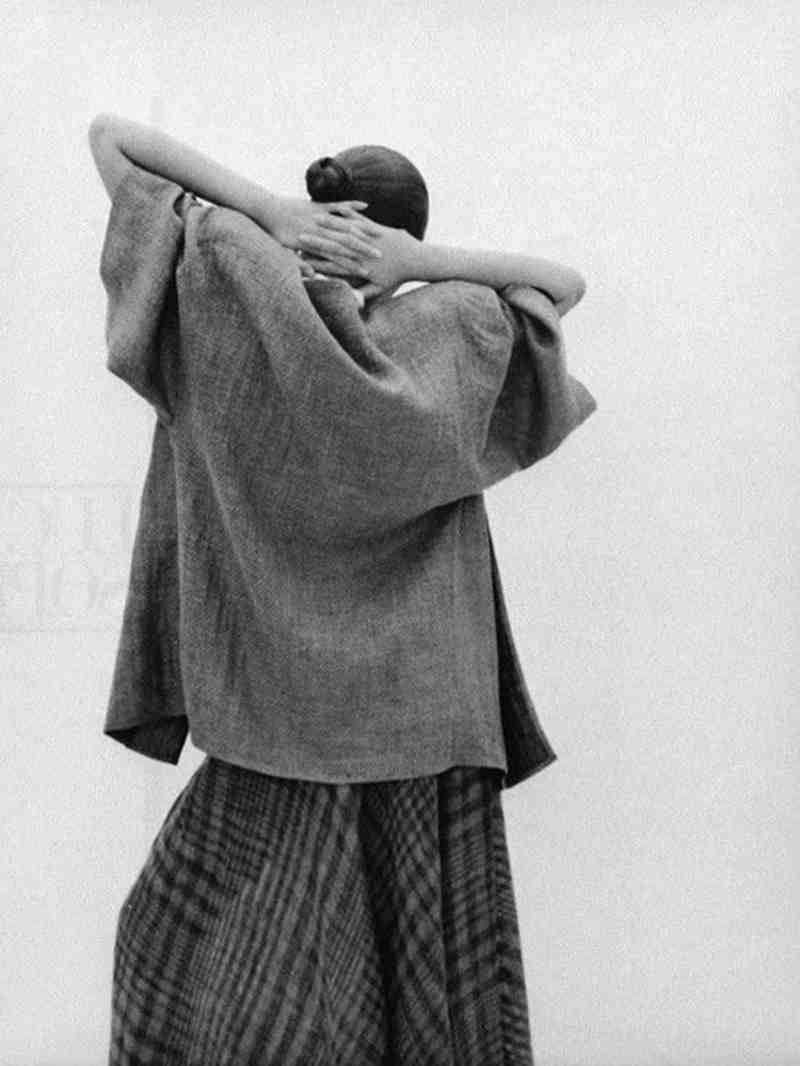
The ’70s
Two years after, he was already responsible for 7 collections. In 1974 he left the province and arrived in Milan, which at that time was establishing itself as the capital of ready-made haute couture. He designed for Basile and GFT. In 1982 he debuted on the runways of Milan with a line that still carries his name: his garments were made with great ability and sartorial technique, under the banner of comfort and functionality. Since then, a number of recognizable constants have defined his style, such as his use of non-colors, the quality of the materials and the combination of masculine fabrics with very feminine lines, even if they always were somewhat austere.
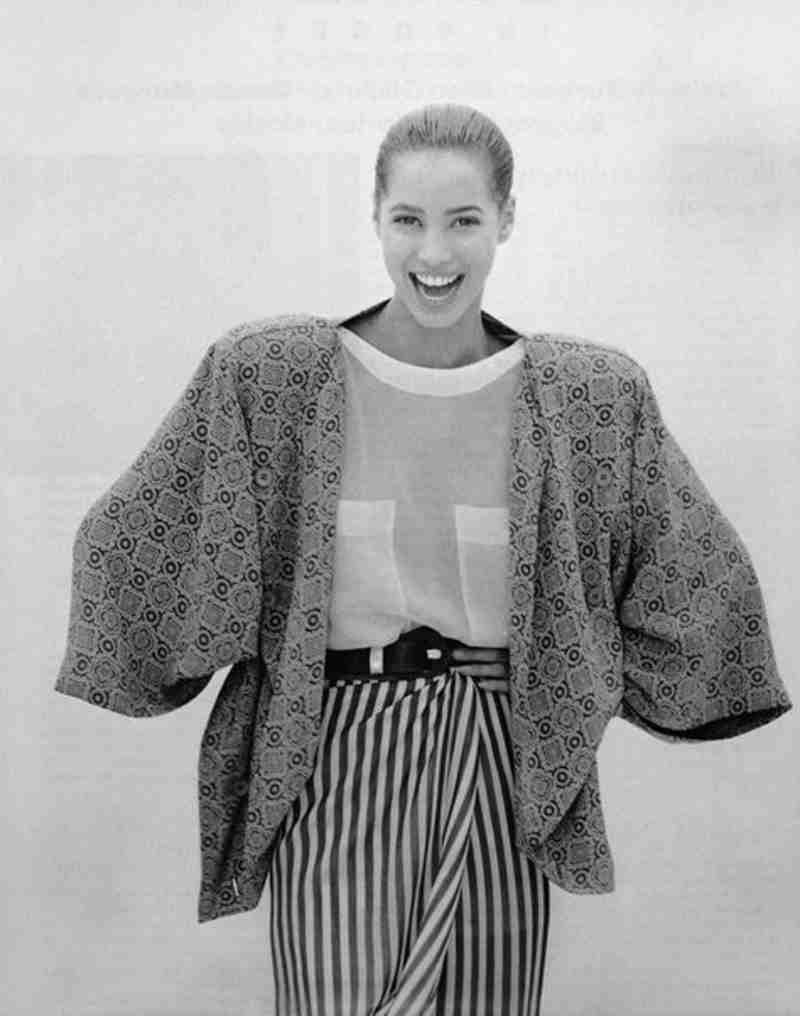
Kashiyama and Luciano Soprani
In 1986 he was the first Italian fashion designer to join the Japanese distribution company Kashiyama. He conquered the Far East market, but his association with them lasted only 5 years. At the end of the 1990s, Soprani conceived and produced four menswear and womenswear collections and designed about 20 lines under license, from textiles to every type of accessory. He puts his name to 7 fragrances for men and women. His last fashion show – on 24 September 1999, a month before his death (which occurred in Milan due to a cancer) – finished, as always, with him appearing on the runway with his models.
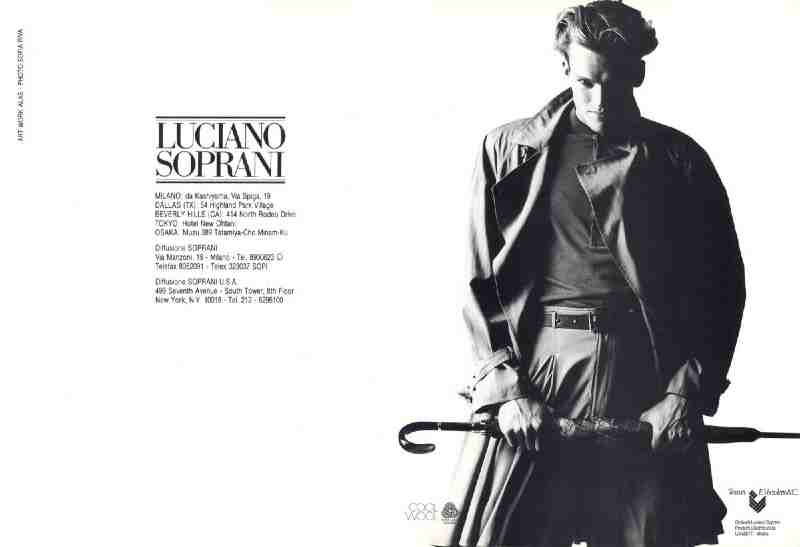
The new millennium: after Soprani
The person who took over Soprani was called Dilio Ortigoza: he was a Venezuelan man, but his overthrowing of the stylistic rules meant that he had to be replaced by Alessandro Turci, a 43-year-old Italian fashion designer who restored the sober style of measured good taste that is so important to the house’s clients (with an eye also on the demands of their daughters). He began with a womenswear collection for Spring/Summer 2003.
At the wishes of Satinine, the company that bought the brand in 2001, he also produced menswear collections, home collections, accessories, and perfumes too. Turci boasts a solid background. Besides a degree in law, in 2002 the California fashion magazine Flaunt picked him out as one of the people shaping the fashion scene in Milan: it was a first step for the relaunch of the label. In the same year a 5-year agreement was signed between the Studio Soprani and Afc. to produce and distribute the first Luciano Soprani ready-to-wear womenswear line worldwide, beginning with the Fall/Winter collection 2002/2003. Furthermore, in 2002, an alliance was formed between Luciano Soprani and Facis, a company with 830 points of sale in Italy and 320 abroad, to produce and distribute a menswear line for 7 years both in Italy and abroad.
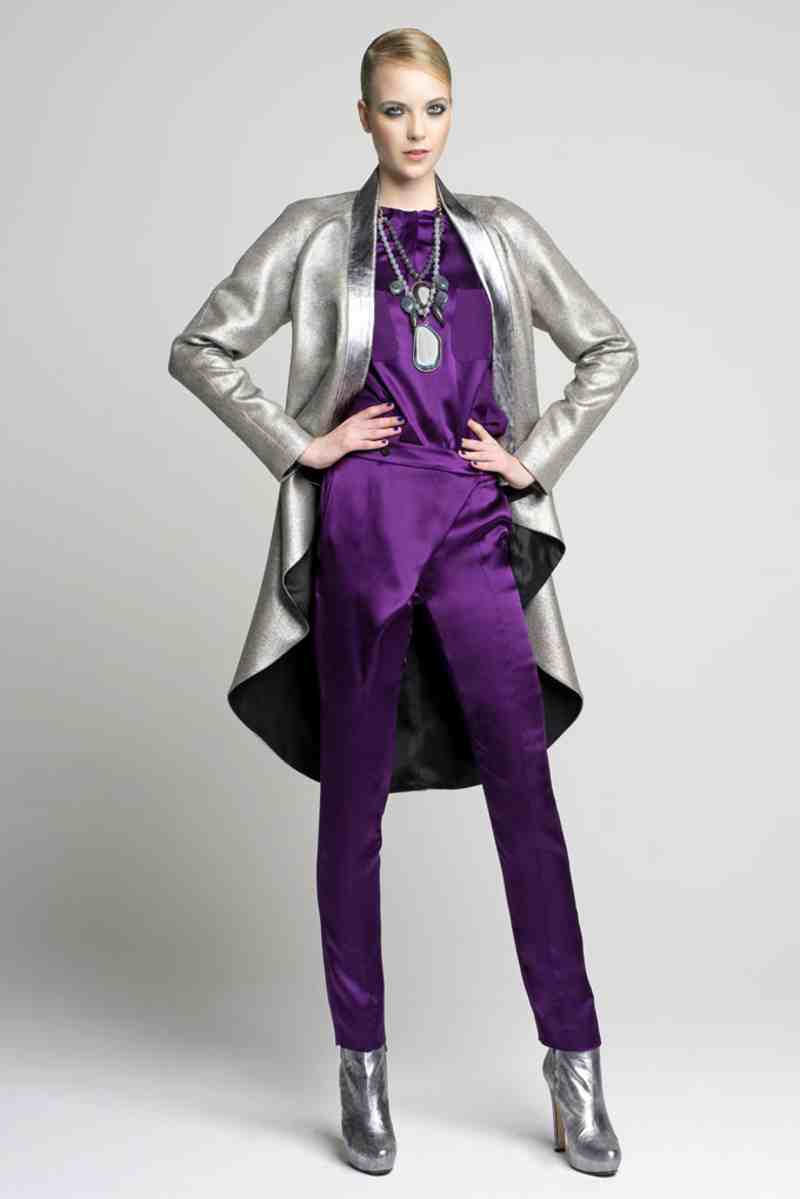
The acquisition of the griffe from Satinine S.p.A., leader company in perfumes and cosmetics field, concluded with the fusion of the firms. Nowadays Studio Soprani regained the founder’s name and, from January 2006, it became the Luciano Soprani s.r.l. The Creative Direction was confirmed to Alessandro Turci: he started with the ready-to-wear womenswear SS 2003 collection; then he partnered with international brands, thanks to his innovative mind. He became the spokesperson of the new path of the maison, whose style was very creative and in step with the times.
In September 2010 the Luciano Soprani fought with the Camera Nazionale della Moda Italiana: the last one, indeed, revoked his agreement with Fiera Milano which allowed it to organize the runway shows in the area of the fair when the Luciano Soprani s.r.l. didn’t find other ones yet. So the CEO Vittorio Petrone decided to resign from the CNMI and not to organize fashion shows anymore during the Milano fashion weeks. His decision was accompanied by these words:
The careless decision denotes the complete indifference for member companies and the comfort which by few companies in the Executive Board decide about the destiny of they members, without any consult with them. All that confirms the loss of the mission of Camera della Moda and the non-recognition that the Italian fashion is surely made by big and prestigious labels, but it also includes medium and small companies which, all united, constitute the precious network of the Italian fashion.
In the following years the company continued his development and specialized in the creation of menswear, womenswear and kidswear formal dresses. In particular: in December 2010 Modelleria Italiana received a license for the production of kidswear dresses and, in 2012, respectively in February and June, the Textura Group and the masculine shirt factory Milena S.p.A. obtained the license for the production of menswear formal dresses and shirts.
You may also like:
To read the item in Italian click here.
